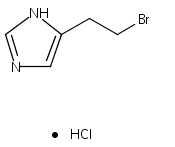Co-reporter: Justin A. Shapiro and Timothy A. Wencewicz
pp: 157
Publication Date(Web):December 9, 2015
DOI: 10.1021/acsinfecdis.5b00145
Pathogenic strains of Acinetobacter baumannii excrete multiple siderophores that enhance iron scavenging from host sources. The oxazoline siderophore pre-acinetobactin undergoes an unusual non-enzymatic isomerization, producing the isoxazolidinone acinetobactin. In this study, we explored the kinetics, mechanism, and biological consequence of this siderophore swapping. Pre-acinetobactin is excreted to the extracellular space where the isomerization to acinetobactin occurs with a pH-rate profile consistent with 5-exo-tet cyclization at C5′ with clean stereochemical inversion. Pre-acinetobactin persists at pH <6, and acinetobactin is rapidly formed at pH >7, matching each siderophore’s pH preference for iron(III) chelation and A. baumannii growth promotion. Acinetobactin isomerization provides two siderophores for the price of one, enabling A. baumannii to sequester iron over a broad pH range likely to be encountered during the course of an infection.Keywords: Acinetobacter baumannii; acinetobactin; antibiotic resistance; antivirulence; siderophore
